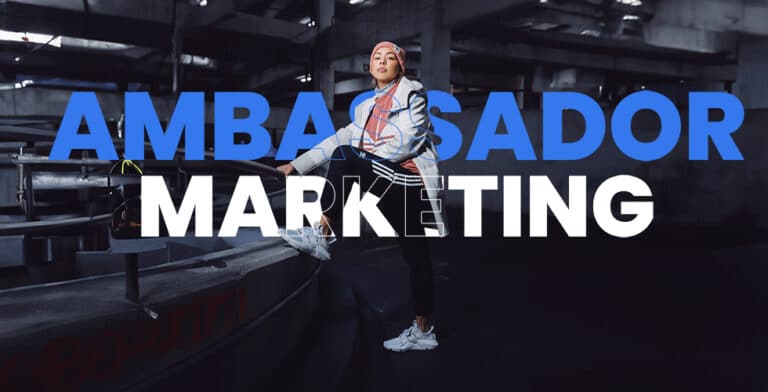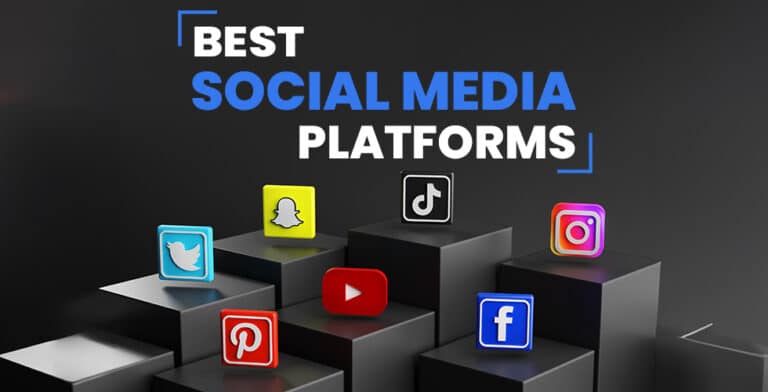In today’s competitive business landscape, forming strategic partnerships with other brands has become a powerful way to boost visibility, expand reach, and tap into new markets. Brand partnerships offer a mutually beneficial opportunity for businesses to collaborate, share resources, and leverage each other’s strengths to achieve common goals.
Whether you’re a startup looking to gain credibility or an established company seeking innovative ways to grow, knowing how to find brand partnerships can be a game-changer for your business.
However, identifying and securing brand partnerships can be a daunting task without a clear strategy. It requires a thoughtful approach, careful research, and effective networking. In this guide, we will explore the key steps and considerations involved in finding brand partnerships that align with your business objectives and values.
In this content, we will talk about the ins and out of brand partnerships, how brand collaborations work, types of brand partnerships, and ways to find the right partner for your brand to collaborate with.
What Is Brand Partnership/Collaboration?
Brand collaboration refers to a strategic partnership between two or more brands to combine their resources, expertise, and market influence to create mutually beneficial opportunities. It involves the co-creation or joint promotion of products, services, campaigns, or events, allowing each brand to leverage the other’s strengths and reach a wider audience.
In a brand collaboration, the partnering brands work together to achieve common goals, such as increasing brand awareness, expanding the customer base, driving sales, or entering new markets. By pooling their resources, knowledge, and creativity, they can create unique and compelling offerings that resonate with their target audience.
Collaborations can take various forms, depending on the objectives and nature of the partnering brands. For example, brands may collaborate on co-branded products or limited-edition collections, where they combine their expertise and design aesthetics to create something new and exclusive. They may also collaborate on joint marketing campaigns, sharing the costs and leveraging their combined reach to generate buzz and engagement.
The key to a successful brand collaboration lies in finding partners that share similar values, target audiences, or complementary offerings. This ensures a synergistic relationship where each brand brings something unique to the table and benefits from the association. By tapping into each other’s customer base and brand equity, the collaborating brands can amplify their brand messages and tap into new markets or demographics.

How Do Brand Partnerships Work?
Brand collaborations work by bringing together two or more brands to combine their resources, expertise, and brand equity to create a joint marketing initiative, product, or campaign. The collaboration aims to leverage the strengths and reach of each brand to achieve common objectives and generate shared value.
Here’s how brand collaborations typically work:
- Establish shared goals: The collaborating brands define their shared objectives and align their interests. This could include increasing brand awareness, entering new markets, reaching a specific target audience, or launching a new product or service.
- Identify complementary strengths: Each brand identifies its unique strengths, whether it’s expertise, a loyal customer base, creative capabilities, or access to specific distribution channels. By understanding the individual strengths, the collaboration can leverage the best of each brand.
- Define roles and responsibilities: Clear roles and responsibilities are assigned to each brand involved in the collaboration. This ensures that everyone understands their specific contributions, timelines, and deliverables.
- Joint planning and ideation: The collaborating brands engage in brainstorming sessions and collaborative planning to develop ideas, concepts, and strategies. They explore ways to combine their resources and expertise to create a unique offering that aligns with their shared goals.
- Resource sharing: Brands collaborate by pooling resources such as marketing budgets, production facilities, distribution networks, or creative teams. This sharing allows for more impactful campaigns or product development that would be difficult to achieve individually.
- Co-creation: In many brand collaborations, the brands actively work together to co-create a product, service, or marketing campaign. This involves combining their brand elements, design aesthetics, or technology to generate a distinct and mutually beneficial offering.
- Marketing and promotion: Once the collaboration is finalized, the brands jointly market and promote the collaboration. They utilize various channels such as social media, email marketing, influencers, traditional advertising, or public relations to amplify the reach and impact of the collaboration.
- Measurement and evaluation: After the collaboration is launched, the brands track and evaluate the performance of the initiative. They assess key metrics such as sales, brand awareness, customer engagement, or social media reach to gauge the success of the collaboration and inform future strategies.
Brand collaborations can take various forms, including co-branded products, limited-edition collections, joint marketing campaigns, sponsorships, events, or cause-related initiatives. The success of a brand collaboration depends on effective communication, aligned goals, and a mutually beneficial partnership that creates value for both brands and resonates with their target audience.
Types Of Brand Partnerships
Brand partnerships can take on various forms, depending on the objectives and nature of collaboration. Here are some common types of brand partnerships:

- Co-Branding Collaborations: Co-branding partnerships involve the creation of a joint product, service, or collection that combines the strengths and attributes of each brand. By merging their brand elements, expertise, or design aesthetics, the collaborating brands create a unique offering that appeals to both their customer bases. Co-branded collaborations can range from limited-edition products to long-term partnerships that span various industries.
- Sponsorship Agreements: Sponsorship partnerships occur when a brand financially supports an event, organization, or individual in exchange for brand exposure and association with the sponsored entity. Brands often engage in sponsorship agreements to align themselves with specific causes, target niche markets, or enhance their brand image through affiliation with popular events or influencers.
- Influencer Collaborations: Brands partner with influencers or content creators in influencer collaborations to leverage their reach, credibility, and expertise. Influencers promote the brand’s products or services through sponsored content, brand endorsements, or co-created content. These collaborations aim to tap into the influencer’s loyal audience and benefit from their authentic engagement. For example, doughnut chain Dunkin partnered with influencer Charli D’Amelio which led to around 45% more coffee sales.
- Cause-Related Partnerships: Cause-related brand partnerships focus on collaborating with nonprofit organizations or social enterprises to support a shared cause or address a social issue. These partnerships help brands demonstrate their commitment to social responsibility, engage with socially conscious consumers, and make a positive impact on society. Cause-related partnerships can involve fundraising campaigns, cause-related marketing initiatives, or joint programs aimed at driving positive change.
- Licensing Partnerships: Licensing partnerships involve granting the rights to use a brand’s intellectual property, such as logos, characters, or trademarks, to another brand for specific products or services. This allows the partnering brand to capitalize on the established brand equity and recognition of the licensed brand to enhance its own offerings.
- Distribution Partnerships: Brands form distribution partnerships to expand their market reach by leveraging the distribution channels of another brand. This can involve collaborations with retailers, e-commerce platforms, or distributors to increase product availability and accessibility to a wider audience.
Each type of brand partnership offers unique advantages and considerations. The choice of partnership type depends on the specific objectives, target audience, and resources of the collaborating brands. By selecting the most appropriate partnership model, brands can unlock opportunities for growth, innovation, and increased brand visibility.
How To Find Brands For Partnerships
To be very specific, in order to do successful brand collaborations, there are a few key points that you should take into account. By keeping these points in mind, you can help ensure a successful and fruitful brand collaboration that aligns with your business objectives and creates value for all parties involved.
- Define your objectives: Before embarking on a brand collaboration, it is crucial to clearly establish your desired outcomes. This may include increasing sales, enhancing social media engagement, or fostering brand loyalty. Identifying your goals will assist in determining the most suitable cross-brand collaborations and selecting the right partners.
- Select the appropriate partner: Optimal partnerships involve brands that possess some level of alignment but also have distinct customer bases and industry overlaps. This balance allows both parties to expand their market share effectively. For instance, a food brand might not find value in collaborating with a furniture business due to limited shared interests, whereas an ice cream company would benefit from partnering with a complementary business like a furniture retailer, as exemplified by the collaboration between Casper and West Elm.
- Utilize partnership management tools: Utilizing tools like the Shopify Collabs app can simplify the process of recruiting and managing content creators for product promotion, brand endorsement, and sales growth. Such tools enable you to review and approve creator applications, provide gifts to valued creators, generate discount codes and affiliate links, and accurately track and compensate creators’ sales commissions.
- Foster communication and flexibility: Once potential partners have been identified, initiate communication to establish shared goals and expectations for the collaboration. It is important to maintain open lines of communication throughout the partnership and be willing to compromise when necessary. Discussions should encompass aspects such as the appearance of potential products or advertisements, profit-sharing arrangements, and methods for tracking and measuring success.
Benefits Of Brand Partnerships
Forming a brand partnership presents a remarkable opportunity for business growth, granting access to untapped markets and new target audiences. Engaging in brand collaborations offers several advantages that can positively impact your business:
- Reach new audiences: Collaborating with another company that has an established customer base provides access to potential customers in previously unexplored markets or demographics. This strategic partnership allows you to tap into fresh audiences that may have been challenging to reach independently.
- Cost-effectiveness and revenue growth: Research indicates that brand collaborations can be up to 25 times more cost-effective compared to traditional digital advertising while delivering similar results. Moreover, a report by American Express revealed that 64% of highly collaborative businesses experienced significant revenue growth within a 12-month period. By leveraging the resources and reach of a partner brand, you can generate cost savings and drive revenue growth.

- Generate buzz and demand: Brand collaborations have the potential to create a buzz around your business. By engaging in scarcity marketing through the co-creation of exclusive or limited-edition products or services, you can stimulate demand and boost sales. This collaborative approach attracts attention, generates excitement, and entices customers with unique offerings.
- Capitalize on complementary strengths: Partnering with a brand that excels in areas where your business may struggle enables you to leverage each other’s strengths in a mutually beneficial manner. For instance, if your business specializes in building sophisticated, user-friendly technological products but lacks creativity, collaborating with a creative-oriented brand can unlock synergies that maximize both brands’ capabilities.
Example Of Successful Brand Partnership
Gaining insights from successful brand collaborations can serve as a valuable source of inspiration when brainstorming ideas for your own brand partnerships. Here are several notable examples to fuel your creativity:
- Spotify and Hulu: The tech giants in music and TV streaming, Spotify and Hulu, joined forces to present customers with an enticing discounted bundle of their products. This strategic partnership aimed to encourage subscriptions to both services, expanding their customer base and fostering mutual growth.
- Walmart and BuzzFeed: In yet another successful partnership involving BuzzFeed, the renowned retailer Walmart collaborated with BuzzFeed’s food and drink vertical, Tasty. This collaboration involved incorporating Walmart-branded cookware in Tasty’s videos, effectively showcasing the retailer’s products to a wide audience and reinforcing its brand presence.
- Home Depot and Pinterest: Home improvement retailer Home Depot and popular social media site Pinterest came together to create a series of pins. These pins served as a guide for users, demonstrating which Home Depot products were necessary for various home improvement projects and offering instructions on how to utilize them. This collaboration harnessed the visual appeal and DIY enthusiasm of Pinterest to drive engagement and sales for Home Depot.
- Adidas and Peloton: Adidas and Peloton, targeting a shared audience of active individuals, collaborated on a clothing line. This partnership allowed the brands to leverage their respective expertise and brand appeal to create a collection that resonated with their target consumers’ active lifestyles.0
- Airbnb and Flipboard: Airbnb and news aggregator Flipboard collaborated to create Experiences, an offering tailored to users’ interests. This collaboration enabled Airbnb to deliver high-quality content through Flipboard’s platform, further enhancing the user experience and showcasing the diversity of Airbnb’s offerings.
Wrapping Up
In conclusion, for influencers in 2023, the process of discovering brand collaborations necessitates the establishment of a strong personal brand, a deep understanding of your audience, and a consistent dedication to showcasing your creativity and value. By adopting the right mindset and approach, you can cultivate meaningful relationships with brands that align with your niche and create sponsored content that deeply resonates with your followers.
It is crucial to maintain authenticity and transparency throughout your influencer journey. Prioritizing the quality and creativity of your content is essential to captivate your audience and leave a lasting impact. Additionally, staying updated with industry trends enables you to capitalize on emerging opportunities. By adhering to these guidelines, you can position yourself as an invaluable influencer, securing partnerships with brands that will not only help expand your audience but also assist in achieving your goals.





